India has several UNESCO World Heritage Sites, each with its own unique significance. While writing this article there are 42 records in the list of UNESCO world heritage sites in India.
List of UNESCO World Heritage Sites in India
| Sl. No. | Site | Location | Listed Year | UNESCO Data | Description |
|---|---|---|---|---|---|
| 1 | Taj Mahal | Agra, Uttar Pradesh | 1983 | 252; i (cultural) | The Taj Mahal is a symbol of eternal love, built by Emperor Shah Jahan in memory of his wife Mumtaz Mahal. |
| 2 | Agra Fort | Agra, Uttar Pradesh | 1983 | 251; iii (cultural) | Agra Fort is a formidable red sandstone fortress that served as the main residence of the Mughal emperors, including Shah Jahan, who built the nearby Taj Mahal. |
| 3 | Ajanta Caves | Maharashtra | 1983 | 242; i, ii, iii, vi (cultural) | A house ancient Buddhist rock-cut caves adorned with magnificent paintings and sculptures dating back to the 2nd century BCE. |
| 4 | Ellora Caves | Maharashtra | 1983 | 243; i, iii, vi (cultural) | A remarkable complex of rock-cut temples representing Hindu, Jain, and Buddhist traditions, showcasing masterful artistry and religious diversity. |
| 5 | Group of Monuments at Mahabalipuram | Tamil Nadu | 1984 | 249; i, ii, iii, vi (cultural) | Renowned for its ancient rock-cut temples and sculptures, reflecting exceptional Dravidian art and architecture. |
| 6 | Sun Temple, Konark | Odisha | 1984 | 246; i, iii, vi (cultural) | An architectural marvel known for its intricate carvings and unique chariot-shaped design dedicated to the Sun God. |
| 7 | Kaziranga National Park | Assam | 1985 | 337; ix, x (natural) | A haven for the endangered one-horned rhinoceros, boasting diverse wildlife and unique ecosystems in its expansive grasslands and wetlands. |
| 8 | Keoladeo National Park | Rajasthan | 1985 | 340; x (natural) | Famous for for migratory birds with its diverse wetland ecosystems, making it a paradise for birdwatchers and nature enthusiasts. |
| 9 | Manas Wildlife Sanctuary | Assam | 1985 | 338; vii, ix, x (natural) | A biodiversity hotspot and a haven for rare and endangered species, including the Bengal tiger, one-horned rhinoceros, and pygmy hog. |
| 10 | Churches and Convents of Goa | Goa | 1986 | 234; ii, iv, vi (cultural) | Encompass a collection of beautifully preserved Catholic churches and colonial-era convents, showcasing the rich cultural and religious history of Goa. |
| 11 | Fatehpur Sikri | Uttar Pradesh | 1986 | 255; ii, iii, iv (cultural) | A well-preserved Mughal architectural marvel, featuring a fortified city with stunning palaces, courtyards, and the Buland Darwaza. |
| 12 | Group of Monuments at Hampi | Karnataka | 1986 | 241bis; i, iii, iv (cultural) | Comprises the awe-inspiring ruins of the medieval Vijayanagara Empire, showcasing exceptional Dravidian architecture and urban planning. |
| 13 | Khajuraho Group of Monuments | Madhya Pradesh | 1986 | 240; i, iii (cultural) | Stunning medieval temples adorned with intricate erotic sculptures, showcasing exceptional craftsmanship and architectural splendor. |
| 14 | Elephanta Caves | Maharashtra | 1987 | 244rev; i, iii (cultural) | A house intricately carved rock-cut sculptures, including the notable Trimurti, showcasing ancient Hindu artistry and mythology. |
| 15 | Great Living Chola Temples | Tamil Nadu | 1987 | 250bis; ii, iii (cultural) | It includes Brihadeeswarar Temple, Airavateshwarar Temple, and Gangaikondacholapuram, showcasing outstanding examples of Chola architecture from the 11th and 12th centuries. |
| 16 | Group of Monuments at Pattadakal | Karnataka | 1987 | 239rev; iii, iv (cultural) | A harmonious blend of Dravidian and Nagara architectural styles, featuring intricately carved temples that exemplify the cultural and artistic richness of the Chalukya dynasty. |
| 17 | Sundarbans National Park | West Bengal | 1987 | 452; ix, x (natural) | A vast mangrove forest known for its unique ecosystem, Royal Bengal tigers, and diverse wildlife inhabiting the delta of the Ganges, Brahmaputra, and Meghna rivers. |
| 18 | Nanda Devi and Valley of Flowers National Parks | Uttarakhand | 1988 | 335bis; viii, x (natural) | Boast breathtaking alpine meadows and diverse flora, including rare and endangered species, set against the backdrop of the majestic Nanda Devi peak. |
| 19 | Buddhist Monuments at Sanchi | Madhya Pradesh | 1989 | 524; i, ii, iii, iv, vi (cultural) | One of the oldest and most well-preserved stupas, representing the pinnacle of Buddhist art and architecture from the 3rd century BCE. |
| 20 | Humayun’s Tomb, Delhi | Delhi | 1993 | 232bis; ii, iv (cultural) | Aa splendid Mughal architectural masterpiece and the tomb of the Mughal Emperor Humayun, surrounded by exquisite gardens. |
| 21 | Qutub Minar and its Monuments, Delhi | Delhi | 1993 | 233; iv (cultural) | A towering minaret and a complex of historical structures, showcasing Indo-Islamic architecture and rich cultural heritage. |
| 22 | Mountain Railways of India | West Bengal, Tamil Nadu, Himachal Pradesh | 1999 | 944ter; ii, iv (cultural) | The Darjeeling Himalayan Railway, Nilgiri Mountain Railway, and Kalka-Shimla Railway, each showcasing unique narrow-gauge train journeys through picturesque landscapes. |
| 23 | Mahabodhi Temple Complex at Bodh Gaya | Bihar | 2002 | 1056rev; i, ii, iii, iv, vi (cultural) | Where Siddhartha Gautama attained enlightenment, making it one of the most sacred pilgrimage sites for Buddhists worldwide. |
| 24 | Rock Shelters of Bhimbetka | Madhya Pradesh | 2003 | 925; iii, v (cultural) | Known for their prehistoric rock paintings, providing a glimpse into early human life and art dating back to the Paleolithic era. |
| 25 | Champaner-Pavagadh Archaeological Park | Gujarat | 2004 | 1101; ii, iv, v, vi (cultural) | A diverse range of historical structures, including mosques, temples, tombs, and stepwells, reflecting the region’s rich cultural and architectural heritage. |
| 26 | Chhatrapati Shivaji Terminus | Maharashtra | 2004 | 945rev; ii, iv (cultural) | An iconic Victorian-era railway station showcasing a blend of Gothic and Indian architectural styles. |
| 27 | Red Fort Complex | Delhi | 2007 | 231rev; ii, iii, vi (cultural) | A majestic Mughal fortress known for its intricate architecture and historical significance as the main residence of Mughal emperors for nearly two centuries. |
| 28 | The Jantar Mantar, Jaipur | Rajasthan | 2010 | 1338; iii, vi (cultural) | An 18th-century astronomical observatory featuring a collection of architectural instruments, showcasing the scientific prowess of the medieval Indian astronomers. |
| 29 | Western Ghats | Maharashtra, Karnataka, Kerala, Tamil Nadu | 2012 | 1342rev; ix, x (natural) | A mountain range along the western coast of India, recognized for their biodiversity hotspot, unique ecosystems, and crucial role in sustaining the region’s ecological balance. |
| 30 | Hill Forts of Rajasthan | Rajasthan | 2013 | 247rev; ii, iii (cultural) | Encompass six majestic forts in the Aravalli Range, showcasing the architectural prowess and cultural heritage of the Rajput rulers. |
| 31 | Great Himalayan National Park Conservation Area | Himachal Pradesh | 2014 | 1406rev; x (natural) | Known for its diverse flora and fauna, including rare and endangered species, set against the backdrop of majestic Himalayan landscapes. |
| 32 | Rani-ki-Vav (the Queen’s Stepwell) at Patan, Gujarat | Gujarat | 2014 | 922; i, iv (cultural) | An intricately designed stepwell dating back to the 11th century, known for its stunning architecture and ornate sculptures. |
| 33 | Archaeological Site of Nalanda Mahavihara at Nalanda, Bihar | Bihar | 2016 | 1502; iv, vi (cultural) | Preserves the remains of an ancient Buddhist monastery and center of learning, dating back to the 5th century. |
| 34 | Khangchendzonga National Park | Sikkim | 2016 | 1513; iii, vi, vii, x (mixed) | A home to the world’s third-highest peak and a diverse range of flora and fauna in a pristine Himalayan landscape. |
| 35 | The Architectural Work of Le Corbusier | Chandigarh | 2016 | 1321rev; i, ii, vi (cultural) | Encompassing a collection of 17 buildings across seven countries, showcasing the pioneering modernist architectural vision of Le Corbusier. |
| 36 | Historic City of Ahmadabad | Gujarat | 2017 | 1551; ii, v (cultural) | Characterized by its well-preserved medieval architecture, including intricately carved wooden havelis and the iconic Bhadra Fort. |
| 37 | Victorian Gothic and Art Deco Ensembles of Mumbai | Maharashtra | 2018 | 1480; ii, iv (cultural) | Showcase a striking architectural blend from the 19th and 20th centuries, illustrating the city’s colonial past and modern urban development. |
| 38 | Jaipur City, Rajasthan | Rajasthan | 2019 | 1605; ii, iv, vi (cultural) | It is celebrated for its “Pink City” charm, showcasing a harmonious blend of historical palaces, vibrant markets, and grid-based city planning. |
| 39 | Dholavira: a Harappan City | Gujarat | 2021 | 1645; iii, iv (cultural) | It is the remains of an ancient Harappan city, featuring well-planned urban infrastructure and unique water conservation systems. |
| 40 | Kakatiya Rudreshwara (Ramappa) Temple, Telangana | Telangana | 2021 | 1570; i, iii (cultural) | Celebrated for its intricate craftsmanship, including a floating brickwork technique, and is dedicated to Lord Shiva. |
| 41 | Sacred Ensembles of the Hoysalas | Karnataka | 2023 | 1670; i, ii, iv (cultural) | The temples are highly embellished with stone carvings and sculptures, having been constructed by devotees of Shaivism, Jainism, and Vaishnavism. |
| 42 | Santiniketan, West Bengal | West Bengal | 2023 | 1375; iv, vi (cultural) | Based on the Tagore’s philosophy of holistic education, art, and cultural synthesis. The site invites visitors to experience the tranquil ambiance and the enduring legacy of Tagore’s vision in this unique educational and cultural hub. |
In the diverse tapestry of India’s cultural and natural heritage, there lie treasures that have withstood the sands of time and stood witness to the ebb and flow of history. Recognized and revered by UNESCO, these World Heritage Sites in India stand as guardians of the nation’s rich legacy.
Join us on a virtual voyage as we explore these hallowed grounds, each narrating a unique chapter in India’s story of preservation and cultural significance.
1. Taj Mahal
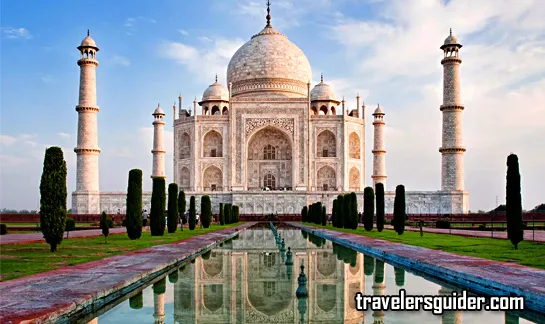
The Taj Mahal, a UNESCO World Heritage Site in Agra, Uttar Pradesh, India, is a peerless testament to eternal love and architectural brilliance. Commissioned in the 17th century by Emperor Shah Jahan in memory of his beloved wife Mumtaz Mahal, this ivory-white marble mausoleum is a masterpiece of Mughal architecture. Its symmetrical perfection, intricate carvings, and the mesmerizing play of light contribute to its status as one of the Seven Wonders of the World. The Taj Mahal’s UNESCO recognition acknowledges its cultural significance and its enduring place in the hearts of millions as a sublime symbol of love.
2. Agra Fort
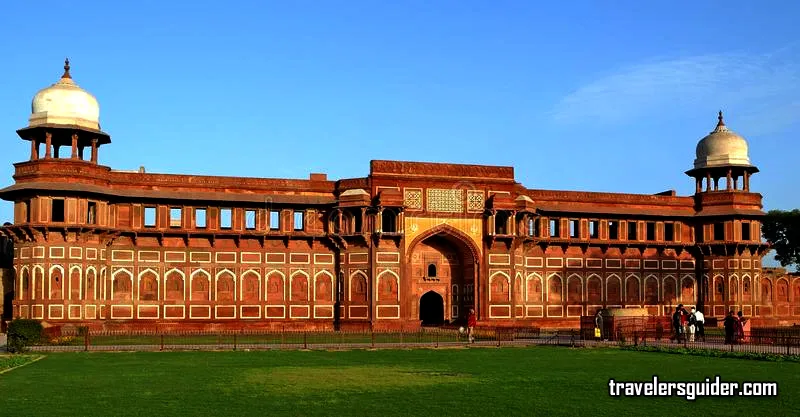
Agra Fort, a UNESCO World Heritage Site in Agra, Uttar Pradesh, India, stands as a formidable symbol of Mughal grandeur. Built in the 16th century, this majestic red sandstone fortress served as a royal residence and strategic stronghold. Its impressive architecture, including the iconic Jahangir Mahal and Diwan-i-Khas, narrates tales of Mughal emperors and their intricate lifestyle. The fort’s inclusion in the UNESCO list acknowledges its historical significance and contribution to India’s rich cultural heritage. Visitors to Agra are treated to a captivating journey through time within the walls of this architectural masterpiece.
3. Ajanta Caves
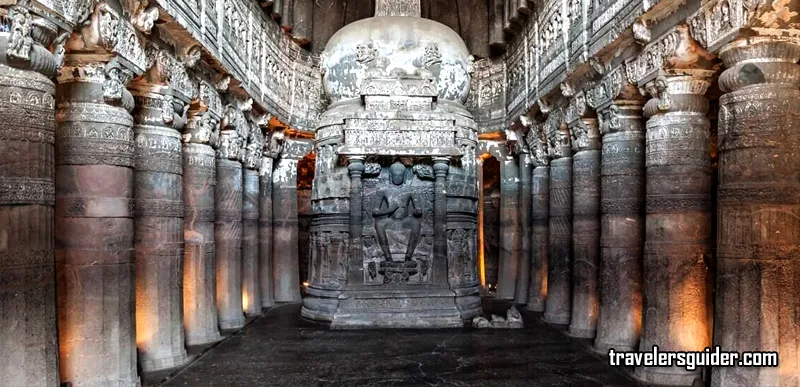
Ajanta Caves, a UNESCO World Heritage Site in Maharashtra, India, unveil an ancient masterpiece of rock-cut architecture and artistry. Carved into the rugged cliffs of the Sahyadri Hills, these caves date back to the 2nd century BCE. Housing exquisite paintings and sculptures, Ajanta Caves depict the life of Buddha and showcase the artistic brilliance of ancient India. The intricate detailing and vibrant murals within the caves transport visitors to a bygone era, making Ajanta a testament to the country’s cultural and artistic heritage.
4. Ellora Caves
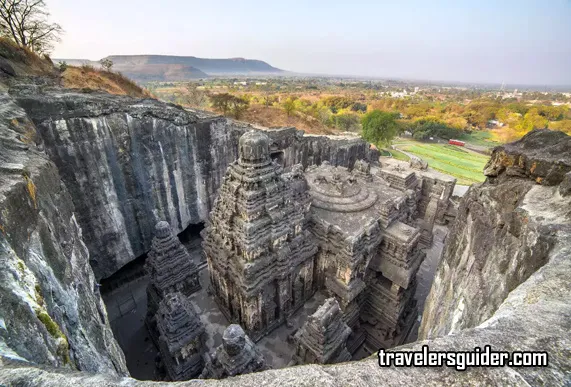
Ellora Caves, a UNESCO World Heritage Site in Maharashtra, India, stand as a testament to the harmonious coexistence of three major religions – Buddhism, Hinduism, and Jainism. Carved into the Charanandri Hills, these caves showcase a remarkable fusion of religious art and architecture, spanning the 6th to 10th centuries. From the awe-inspiring monolithic Kailash Temple dedicated to Lord Shiva to the intricate carvings of Jain Tirthankaras, Ellora is a living canvas of ancient Indian spirituality and craftsmanship. Its inclusion in the UNESCO list recognizes the site’s cultural and religious significance, inviting visitors to explore the rich tapestry of India’s diverse heritage.
5. Group of Monuments at Mahabalipuram
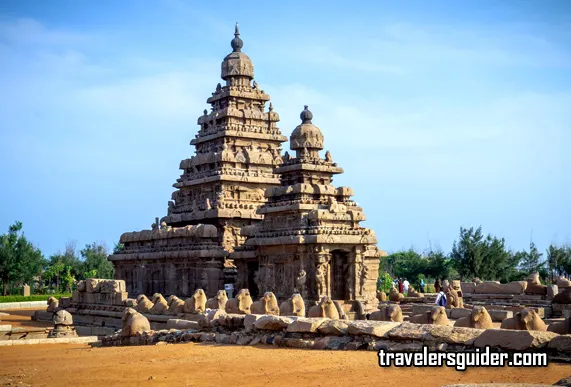
The Group of Monuments at Mahabalipuram, a UNESCO World Heritage Site in Tamil Nadu, India, is a captivating ensemble of ancient rock-cut architecture and artistry. Dating back to the 7th and 8th centuries, these monuments, including the iconic Shore Temple and intricately carved rock reliefs, reflect the architectural finesse of the Pallava dynasty. Nestled along the Coromandel Coast, Mahabalipuram’s UNESCO recognition underscores its role as a maritime trade hub and a testimony to the fusion of art, culture, and religion in ancient South India. Visitors are invited to unravel the stories etched in stone and contemplate the artistic legacy of this coastal marvel.
6. Sun Temple, Konark

The Sun Temple in Konark, Odisha, India, is a UNESCO World Heritage Site that stands as a mesmerizing ode to the sun god Surya. Built in the 13th century, the temple is a testament to the artistic finesse of the Kalinga architecture. Shaped like a colossal chariot with intricate stone wheels, the temple is adorned with delicate carvings and sculptures that narrate mythological tales and celestial visions. The UNESCO recognition highlights the Sun Temple’s cultural and architectural significance, inviting visitors to bask in the celestial beauty of this historic marvel along the Bay of Bengal.
7. Kaziranga National Park
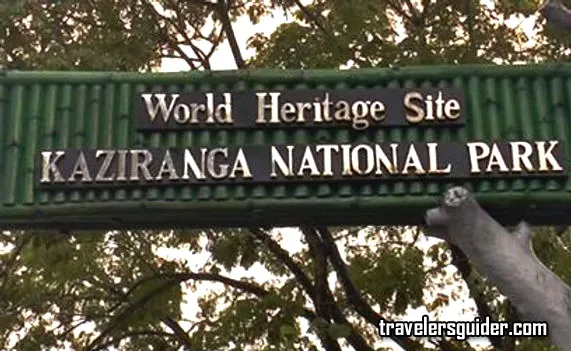
Kaziranga National Park, a UNESCO World Heritage Site in Assam, India, is a biodiversity hotspot and a sanctuary for the iconic Indian one-horned rhinoceros. Sprawling across the floodplains of the Brahmaputra River, Kaziranga is a haven for diverse wildlife, including elephants, tigers, and various bird species. Its unique ecosystem and successful conservation efforts earned it UNESCO recognition, emphasizing the park’s pivotal role in preserving the rich flora and fauna of the Indian subcontinent. Visitors to Kaziranga are treated to a remarkable journey through pristine landscapes, embodying the delicate balance between nature and conservation.
8. Keoladeo National Park
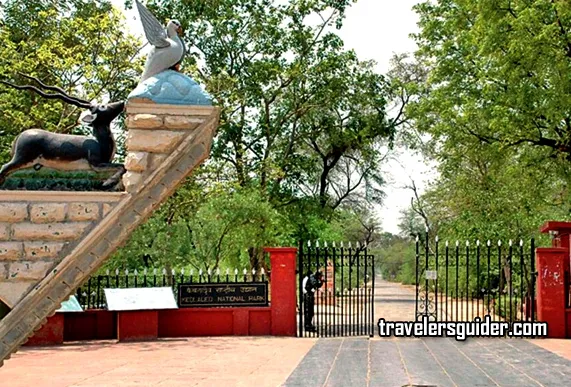
Keoladeo National Park, a UNESCO World Heritage Site in Bharatpur, Rajasthan, India, is a wetland sanctuary that transforms into a vibrant avian paradise. Originally a Maharaja’s duck-hunting ground, the park now hosts a staggering diversity of migratory and resident birds. The Keoladeo Ghana Bird Sanctuary is a crucial habitat for numerous species, including the endangered Siberian Crane. Its UNESCO recognition acknowledges its importance as a unique ecosystem, emphasizing the delicate balance between conservation and the avian splendor that graces this haven for bird enthusiasts and nature lovers.
9. Manas Wildlife Sanctuary
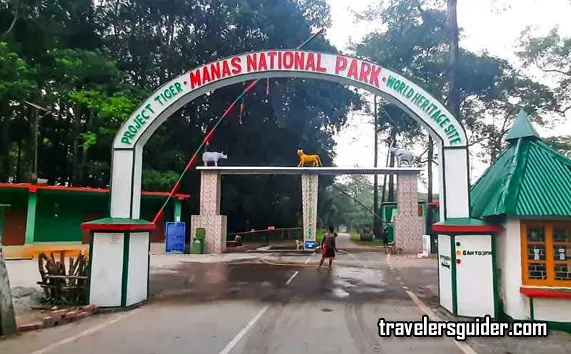
Manas Wildlife Sanctuary, a UNESCO World Heritage Site in Assam, India, is a pristine haven for biodiversity nestled in the foothills of the Eastern Himalayas. This sanctuary, teeming with diverse flora and fauna, including the Bengal tiger, Indian rhinoceros, and pygmy hog, is celebrated for its conservation success. Once threatened, it is now a model for habitat and species protection. The UNESCO recognition underscores Manas Wildlife Sanctuary’s role in preserving the rich ecological tapestry of the region, offering visitors an opportunity to witness the untamed beauty of one of India’s most vital wildlife sanctuaries.
10. Churches and Convents of Goa

The Churches and Convents of Goa, a UNESCO World Heritage Site in Goa, India, whisper tales of a bygone era marked by Portuguese influence and religious fervor. Dating back to the 16th and 17th centuries, these churches, including the Basilica of Bom Jesus and the Se Cathedral, showcase a blend of European and Indian architectural styles. The UNESCO recognition honors these sacred structures as a testament to Goa’s cultural and religious syncretism, inviting visitors to step into the hallowed halls that resonate with history and spirituality.
11. Fatehpur Sikri
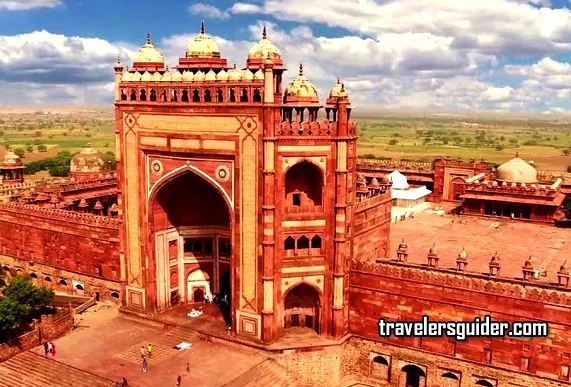
Fatehpur Sikri, a UNESCO World Heritage Site in Uttar Pradesh, India, is a ghost city frozen in time. Commissioned by Emperor Akbar in the 16th century, this architectural marvel served as the Mughal capital for a short-lived period. The city’s stunning red sandstone structures, including the Jama Masjid and Panch Mahal, stand as a testament to Akbar’s vision and his experimentations with Indo-Islamic architecture. Fatehpur Sikri’s UNESCO recognition preserves the echoes of a once-thriving city, inviting visitors to wander through its silent courtyards and ponder the historical mysteries that linger within its walls.
12. Group of Monuments at Hampi

The Group of Monuments at Hampi, a UNESCO World Heritage Site in Karnataka, India, unfolds as an ancient city frozen in time. Once the magnificent capital of the Vijayanagara Empire, Hampi is now a surreal landscape dotted with impressive ruins. The Virupaksha Temple, Vittala Temple complex, and the iconic stone chariot at the Vitthala Temple are among the remnants of this bygone civilization. The UNESCO recognition honors Hampi as a cultural heritage site, inviting visitors to traverse the majestic ruins and witness the echoes of a glorious past etched into every weathered stone.
13. Khajuraho Group of Monuments
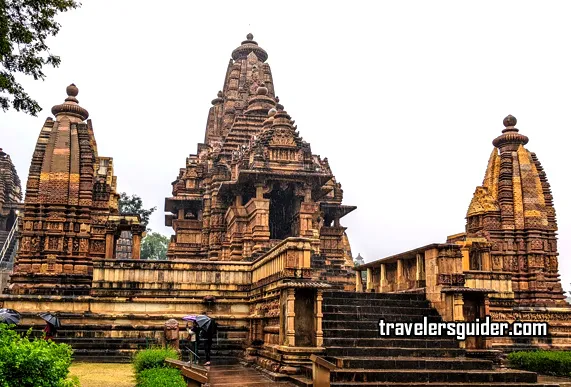
The Khajuraho Group of Monuments, a UNESCO World Heritage Site in Madhya Pradesh, India, is a celebration of human creativity and spiritual expression. Dating back to the 10th and 11th centuries, these temples are adorned with intricately carved sculptures, including the famous erotic depictions. Each structure, such as the Kandariya Mahadeva Temple and Lakshmana Temple, showcases the architectural brilliance of the Chandela dynasty. The UNESCO recognition elevates Khajuraho as a cultural treasure trove, inviting visitors to marvel at the intricate carvings and ponder the intertwining of art, religion, and sensuality in ancient India.
14. Elephanta Caves
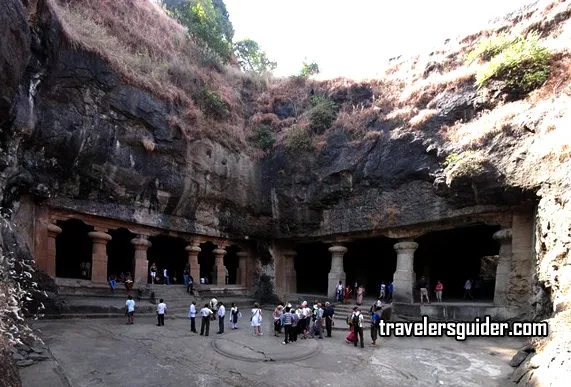
The Elephanta Caves, a UNESCO World Heritage Site off the coast of Mumbai, India, emerge as a testament to ancient rock-cut architecture and spirituality. Carved into the basalt rock during the 5th to 7th centuries, these caves house colossal sculptures of Hindu deities, with the masterpiece being the imposing three-faced Shiva known as Maheshamurti. The UNESCO recognition acknowledges the Elephanta Caves as a sacred site, inviting visitors to traverse the labyrinthine pathways and witness the sublime fusion of art and religion in this serene island sanctuary.
15. Great Living Chola Temples
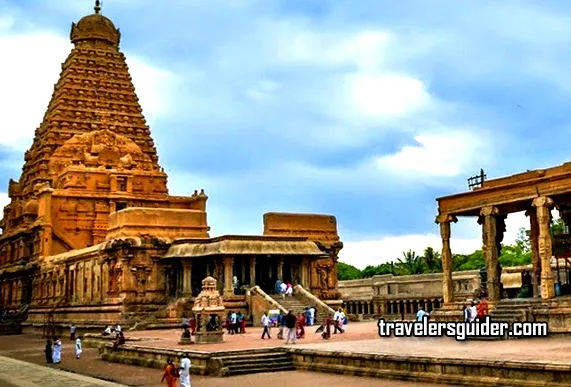
The Great Living Chola Temples, a UNESCO World Heritage Site in Tamil Nadu, India, narrate the tale of the Chola Dynasty’s architectural prowess during the 11th and 12th centuries. Comprising the Brihadisvara Temple at Thanjavur, Brihadisvara Temple at Gangaikondacholisvaram, and the Airavatesvara Temple at Darasuram, these temples showcase grandeur and intricate details. The colossal vimanas, finely carved sculptures, and exquisite frescoes are a testament to the Chola dynasty’s cultural and artistic legacy. The UNESCO recognition underscores the enduring influence of these temples, inviting visitors to witness the living heritage of Chola architecture.
16. Group of Monuments at Pattadakal

The Group of Monuments at Pattadakal, a UNESCO World Heritage Site in Karnataka, India, unfolds as an architectural masterpiece capturing the blend of Hindu and Jain cultures during the 7th and 8th centuries. This sacred complex boasts a harmonious confluence of various temple styles, with notable structures like the Virupaksha and Mallikarjuna Temples. The intricately carved panels and exquisite sculptures narrate tales of mythological sagas. The UNESCO recognition places Pattadakal among the jewels of Indian temple architecture, inviting visitors to immerse themselves in the divine symphony etched in stone.
17. Sundarbans National Park

The Sundarbans National Park, a UNESCO World Heritage Site in West Bengal, India, unfolds as a mystical sanctuary where land and water harmoniously entwine. This sprawling mangrove forest, the largest in the world, is a haven for diverse flora and fauna, including the elusive Bengal tiger. The UNESCO recognition emphasizes the Sundarbans’ significance as a vital habitat for numerous species, showcasing the delicate balance between terrestrial and aquatic ecosystems. Visitors to this unique wilderness are treated to an enchanting interplay of tides, dense mangrove forests, and the rare glimpses of wildlife in their natural habitat.
18. Nanda Devi and Valley of Flowers National Parks
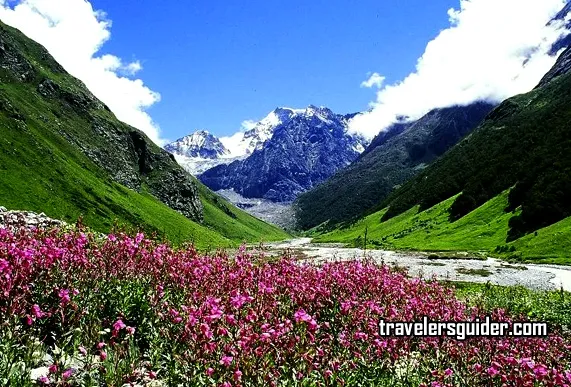
Nanda Devi and Valley of Flowers National Parks, a UNESCO World Heritage Site in Uttarakhand, India, present a symphony of breathtaking landscapes and diverse ecosystems. Nestled in the Western Himalayas, these parks showcase the majestic Nanda Devi peak and an expansive meadow adorned with a vibrant array of alpine flowers. The UNESCO recognition underscores the region’s unique ecological significance, preserving rare and endangered species. Visitors to this pristine wilderness embark on a journey through high-altitude splendor, encapsulating the delicate beauty of the Himalayan flora and the grandeur of Nanda Devi, the second-highest peak in India.
19. Buddhist Monuments at Sanchi
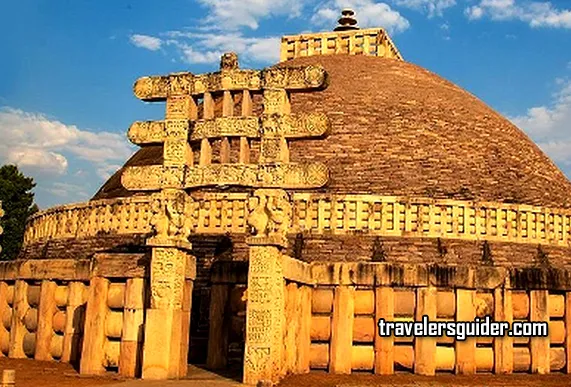
The Buddhist Monuments at Sanchi, a UNESCO World Heritage Site in Madhya Pradesh, India, echo the serenity of Buddhism’s early architectural expressions. Dating back to the 3rd century BCE, the Great Stupa at Sanchi stands as the centerpiece, surrounded by intricately carved gateways known as toranas. These monuments, commissioned by Emperor Ashoka, are a testament to the spread of Buddhism and the evolution of Indian artistry. The UNESCO recognition elevates Sanchi as a sacred pilgrimage site, inviting visitors to witness the spiritual tranquility and artistic brilliance embedded in the ancient stone carvings and monumental structures.
20. Humayun’s Tomb, Delhi

Humayun’s Tomb, a UNESCO World Heritage Site in Delhi, India, stands as an architectural gem echoing the grandeur of the Mughal Empire. Constructed in the 16th century, this monumental tomb is a masterpiece of Persian-inspired design, featuring a striking fusion of red sandstone and white marble. Surrounded by lush gardens, it serves as the final resting place of Emperor Humayun, reflecting the Mughal aesthetic with its symmetrical layout and intricate detailing. Its UNESCO recognition honors its cultural significance and influence on subsequent Mughal architectural wonders, inviting visitors to marvel at its elegance and historical resonance.
21. Qutub Minar and its Monuments, Delhi
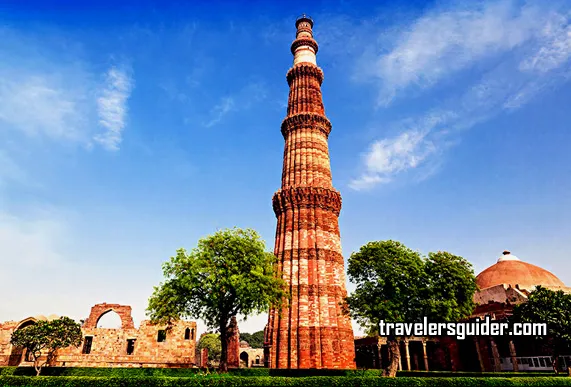
Qutub Minar and its Monuments, a UNESCO World Heritage Site in Delhi, India, chronicle the rich tapestry of Islamic architecture in the Indian subcontinent. The centerpiece, Qutub Minar, is a soaring minaret that stands as a symbol of Delhi’s historical legacy. Built in the early 13th century, the complex also includes the Quwwat-ul-Islam Mosque and the Iron Pillar of Delhi, a testament to ancient metallurgy. The UNESCO recognition highlights the historical and cultural significance of this site, inviting visitors to explore the intricate carvings and towering structures that narrate the story of Delhi’s diverse heritage.
22. Mountain Railways of India
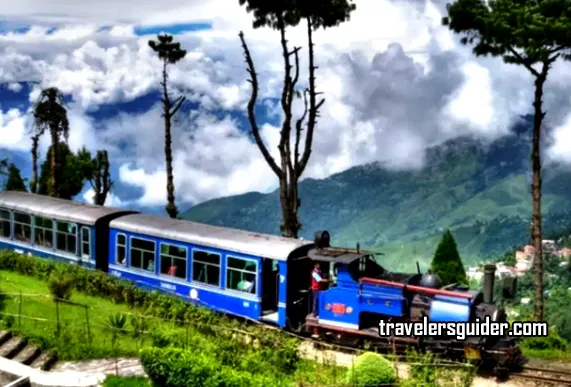
The Mountain Railways of India, a UNESCO World Heritage Site, is a collective ode to engineering marvels that traverse the picturesque landscapes of Darjeeling, Nilgiri, and Kalka-Shimla. Dating back to the 19th and early 20th centuries, these narrow-gauge railways showcase the fusion of technology and topography. The toy trains, chugging through mist-covered hills and dense forests, offer not just a mode of transportation but a nostalgic journey through time. Recognized by UNESCO, these mountain railways are a living testament to India’s colonial-era rail history and the enduring allure of slow, scenic travel in the lap of the Himalayas and the Western Ghats.
23. Mahabodhi Temple Complex at Bodh Gaya
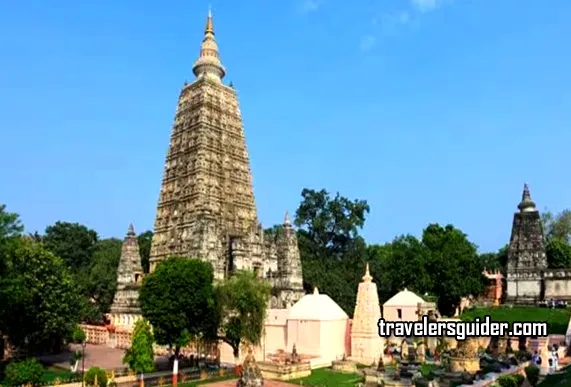
The Mahabodhi Temple Complex at Bodh Gaya, a UNESCO World Heritage Site in Bihar, India, is a sacred enclave that resonates with the spiritual essence of Buddhism. It marks the hallowed ground where Siddhartha Gautama, the Buddha, attained enlightenment beneath the Bodhi Tree. The Mahabodhi Temple, an architectural marvel, rises as a testament to religious harmony, adorned with intricate carvings and a serene aura. Its UNESCO recognition underscores its role as a pilgrimage site, inviting visitors to experience the tranquility and historical significance of the place where Buddhism found its enlightenment.
24. Rock Shelters of Bhimbetka
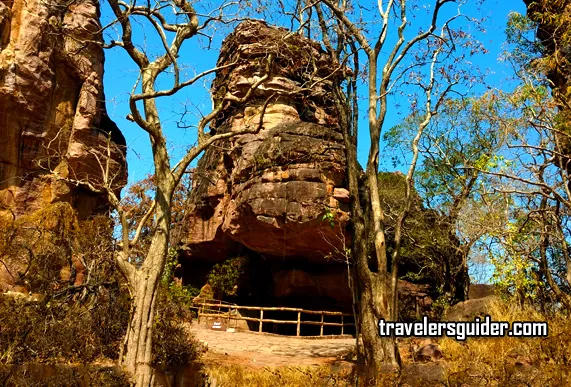
The Rock Shelters of Bhimbetka, a UNESCO World Heritage Site in Madhya Pradesh, India, unveil an ancient canvas of human history. Dating back to the Paleolithic era, these natural rock formations served as canvas and shelter for early humans, displaying vivid prehistoric paintings. The site offers a mesmerizing glimpse into the daily lives, rituals, and evolution of Homo sapiens over thousands of years. Recognized by UNESCO, the Rock Shelters of Bhimbetka are a unique archaeological treasure, bridging the gap between contemporary viewers and the artistic expressions of our ancient ancestors. Visitors are invited to connect with the dawn of human creativity in this captivating outdoor gallery.
25. Champaner-Pavagadh Archaeological Park
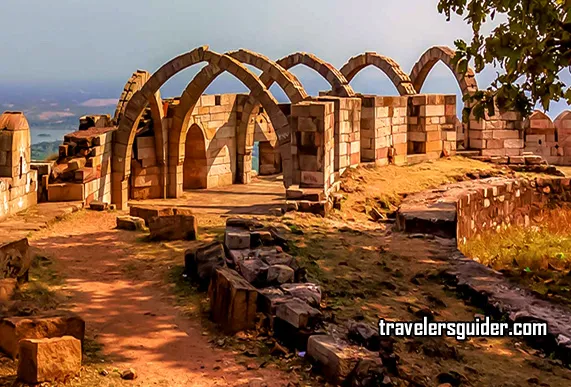
Champaner-Pavagadh Archaeological Park, a UNESCO World Heritage Site in Gujarat, India, unfolds as a cultural time capsule. This archaeological ensemble encompasses the ancient city of Champaner and the sacred hill of Pavagadh, presenting a harmonious blend of Hindu and Islamic architectural styles. The site features splendid mosques, forts, and stepwells, showcasing the cultural confluence during the 16th century. Recognized by UNESCO, it stands as a testament to the region’s historical significance and architectural diversity, inviting visitors to explore the remnants of a bygone era amidst the vibrant landscapes of Gujarat.
26. Chhatrapati Shivaji Terminus (formerly Victoria Terminus)
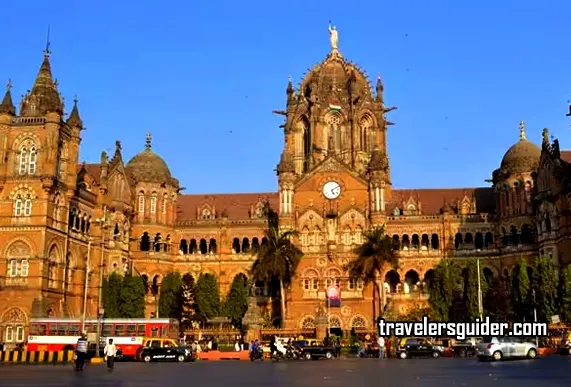
Chhatrapati Shivaji Terminus (CST), formerly known as Victoria Terminus, is a UNESCO World Heritage Site in Mumbai, India, that encapsulates the grandeur of Victorian Gothic Revival architecture. Completed in 1887, this bustling railway station is a symbolic gateway to India’s commercial capital. The terminus is a visual extravaganza with its ornate domes, turrets, and sculpted gargoyles, blending traditional Indian and Victorian Gothic styles. Its UNESCO recognition celebrates not just a transportation hub but an architectural masterpiece that reflects the cultural amalgamation during the British colonial era, inviting travelers and admirers to witness the iconic pulse of Mumbai.
27. Red Fort Complex
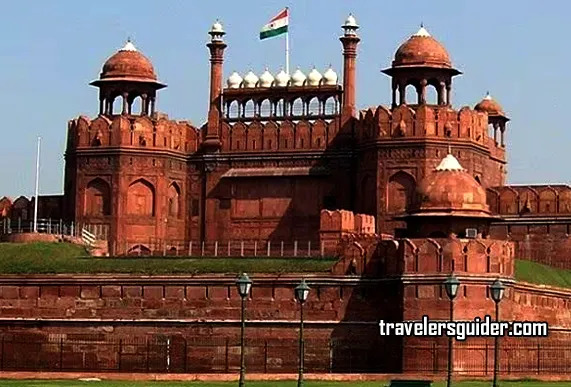
The Red Fort Complex, a UNESCO World Heritage Site in Delhi, India, stands as a testament to the magnificence of Mughal architecture and the historical legacy of imperial power. Constructed in the mid-17th century, the fort served as the main residence of Mughal emperors for nearly two centuries. Its distinctive red sandstone walls house opulent structures like the Diwan-i-Am and Diwan-i-Khas, showcasing intricate Persian and Indian artistic elements. Recognized by UNESCO, the Red Fort Complex is not merely a fort; it’s a living heritage that invites visitors to immerse themselves in the grandeur and history of the Mughal Empire.
28. The Jantar Mantar, Jaipur
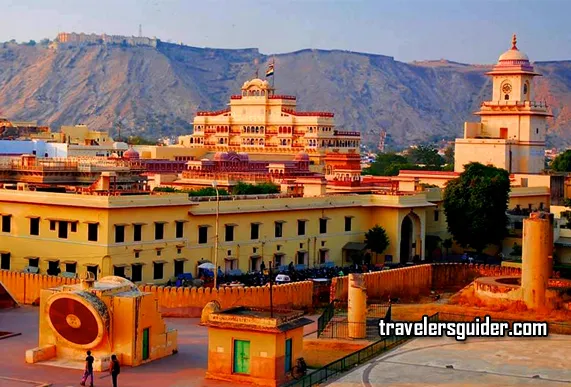
The Jantar Mantar in Jaipur, a UNESCO World Heritage Site, is an astronomical observatory that stands as a testament to the scientific prowess of Maharaja Sawai Jai Singh II. Built in the early 18th century, this collection of nineteen architectural astronomical instruments blends artistry with precision. The site’s massive sundial, known as the Samrat Yantra, is the world’s largest stone sundial, accurately measuring time with remarkable precision. Recognized by UNESCO, the Jantar Mantar is not only an architectural marvel but a historical testament to India’s rich heritage of scientific inquiry, inviting visitors to explore the intersection of astronomy and artistry.
29. Western Ghats
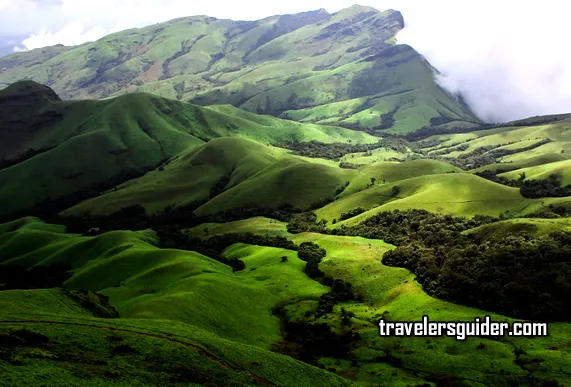
The Western Ghats, a UNESCO World Heritage Site, unfold as a majestic tapestry of biodiversity along the western coast of India. This ancient mountain range, dating back to the Gondwana period, is a UNESCO-listed hotspot renowned for its exceptional plant and animal life. From dense rainforests to unique grasslands, the Western Ghats showcase unparalleled ecological diversity. Recognized for its biological significance, the UNESCO listing emphasizes the region’s vital role in supporting numerous endemic species and maintaining ecological balance. The Western Ghats invite visitors to immerse themselves in the breathtaking landscapes and witness the remarkable natural heritage that has endured for millions of years.
30. Hill Forts of Rajasthan
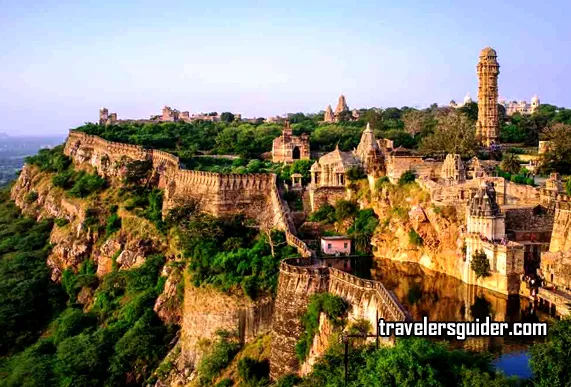
The Hill Forts of Rajasthan, a UNESCO World Heritage Site, proudly crown the Aravalli Range with a blend of architectural splendor and historical significance. Comprising Chittorgarh, Kumbhalgarh, Ranthambhore, Gagron, and Amber forts, these strongholds narrate tales of Rajput valor and cultural richness. Each fort, perched on rugged terrain, boasts unique features, from intricate palaces to formidable battlements. Recognized by UNESCO, the Hill Forts of Rajasthan are not just citadels but enduring symbols of Rajasthan’s regal heritage, inviting visitors to traverse the echoes of history amidst the panoramic landscapes of this enchanting Indian state.
31. Great Himalayan National Park Conservation Area
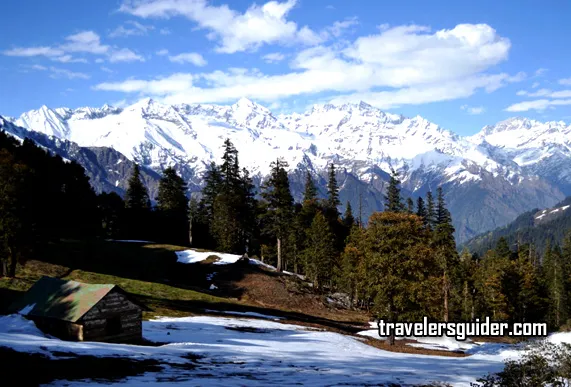
The Great Himalayan National Park Conservation Area, a UNESCO World Heritage Site in Himachal Pradesh, India, unfolds as a sanctuary for pristine biodiversity amidst the majestic Himalayas. Established in 1999, this protected area encompasses alpine meadows, glaciers, and dense forests, serving as a habitat for diverse flora and fauna, including the elusive snow leopard and Himalayan tahr. Recognized by UNESCO, the park is not just a testament to natural beauty but a crucial conservation effort, preserving the unique ecosystems of the Himalayan region. It beckons adventurers and nature enthusiasts to explore its untamed landscapes and witness the fragile harmony of the great Himalayan wilderness.
32. Rani-ki-Vav (the Queen’s Stepwell) at Patan, Gujarat
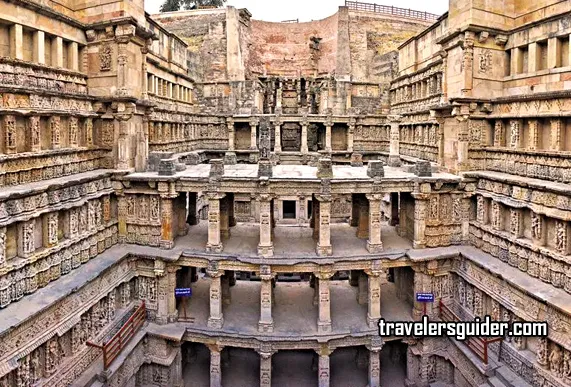
Rani-ki-Vav, the Queen’s Stepwell at Patan, Gujarat, is a UNESCO World Heritage Site that transcends utilitarian architecture into a stunning subterranean work of art. Constructed in the 11th century by Queen Udayamati in memory of her husband, King Bhimdev I, this stepwell is a testament to intricate craftsmanship. Adorned with elaborate sculptures and ornamentation, the stepwell descends seven levels, revealing an ancient engineering marvel. Recognized by UNESCO, Rani-ki-Vav is not just a water-conservation structure but a subterranean sanctuary that invites visitors to marvel at the cultural and artistic legacy of medieval India.
33. Archaeological Site of Nalanda Mahavihara at Nalanda, Bihar
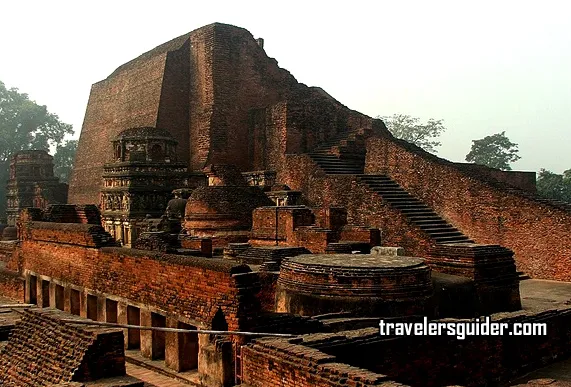
The Archaeological Site of Nalanda Mahavihara at Nalanda, Bihar, is a UNESCO World Heritage Site that preserves the remnants of one of the oldest centers of learning in ancient India. Established in the 5th century CE, Nalanda was a renowned Buddhist university that attracted scholars from across the world. The site showcases the layout of the ancient institution, with ruins of stupas, monasteries, and lecture halls. Recognized by UNESCO, Nalanda Mahavihara stands as a testament to India’s intellectual heritage, inviting visitors to explore the archaeological remains and reflect on the ancient pursuit of knowledge in this scholarly haven.
34. Khangchendzonga National Park
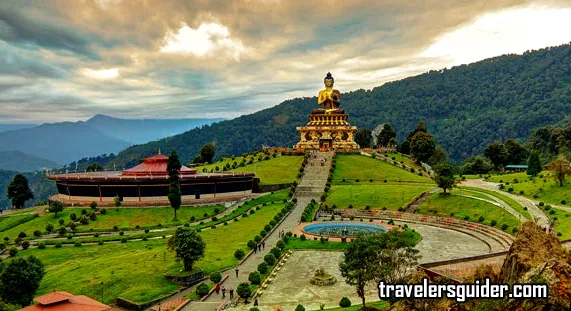
Khangchendzonga National Park, a UNESCO World Heritage Site in the Indian state of Sikkim, is a Himalayan treasure that unfolds as a pristine wilderness sanctuary. Encompassing the third-highest peak in the world, Mount Khangchendzonga, the park is a mosaic of alpine meadows, glaciers, and unique ecosystems. Recognized for its outstanding biodiversity, including the red panda and snow leopard, Khangchendzonga National Park serves as a vital corridor for ecological processes. The UNESCO listing celebrates not just the towering peaks but the fragile beauty of this high-altitude haven, inviting adventurers to witness the splendor of one of the last great wildernesses on Earth.
35. The Architectural Work of Le Corbusier, an Outstanding Contribution to the Modern Movement

“The Architectural Work of Le Corbusier, an Outstanding Contribution to the Modern Movement” encompasses a series of sites across seven countries, showcasing the revolutionary contributions of the Swiss-French architect Le Corbusier. This UNESCO World Heritage Site includes buildings like Villa Savoye in France, the National Museum of Western Art in Japan, and the Capitol Complex in India. Le Corbusier’s avant-garde approach to modern architecture, characterized by functionality, geometric shapes, and an emphasis on open spaces, is evident in these structures. The UNESCO recognition not only honors the individual sites but collectively celebrates the transformative impact of Le Corbusier’s pioneering vision on the global architectural landscape.
36. Historic City of Ahmadabad
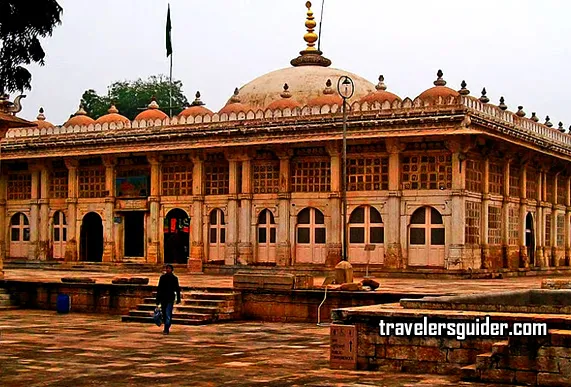
The Historic City of Ahmadabad, a UNESCO World Heritage Site in Gujarat, India, is a living testament to the city’s rich cultural, architectural, and historical tapestry. Founded in the 15th century by Ahmed Shah, the city’s intricate Pols (neighborhoods), historic architecture, and vibrant street life encapsulate its UNESCO recognition. From the Indo-Islamic influences of the Bhadra Fort to the delicate latticework of the Siddi Sayyed Mosque, Ahmadabad’s UNESCO listing acknowledges its role in preserving the essence of medieval India while embracing the dynamic pulse of a modern metropolis. Visitors can explore the city’s UNESCO-protected heritage, where every lane tells a story of bygone eras and contemporary resilience.
37. Victorian Gothic and Art Deco Ensembles of Mumbai

The Victorian Gothic and Art Deco Ensembles of Mumbai, a UNESCO World Heritage Site, form a captivating architectural narrative along the Marine Drive of India’s bustling metropolis. Spanning the 19th and 20th centuries, these ensembles represent the evolution of Mumbai’s urban landscape. From the Victorian-era buildings like the Chhatrapati Shivaji Terminus to the Art Deco gems along Marine Drive, the site reflects the city’s historical and cultural transitions. The UNESCO recognition not only honors the individual buildings but collectively celebrates the harmonious coexistence of two influential architectural styles that have shaped the skyline of this vibrant coastal city. Visitors can stroll along the city’s UNESCO-listed precincts, immersing themselves in the architectural splendors that echo Mumbai’s dynamic history.
38. Jaipur City, Rajasthan
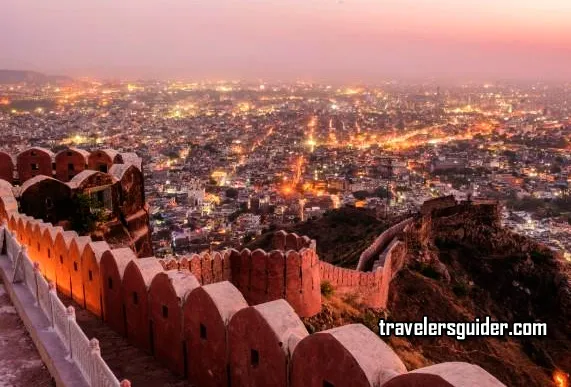
Jaipur City, the capital of Rajasthan, India, is a UNESCO World Heritage Site that radiates the splendor of Rajput architecture and urban planning. Founded in 1727 by Maharaja Sawai Jai Singh II, Jaipur is known for its vibrant pink-hued buildings, earning it the moniker “Pink City.” The city’s architectural marvels, including the Hawa Mahal, City Palace, and Jantar Mantar, showcase a seamless blend of Mughal and Rajput styles. The UNESCO recognition acknowledges Jaipur as an exemplary representation of India’s cultural and architectural heritage, inviting visitors to traverse its bustling streets and explore the regal elegance of this historic city.
39. Dholavira: a Harappan City
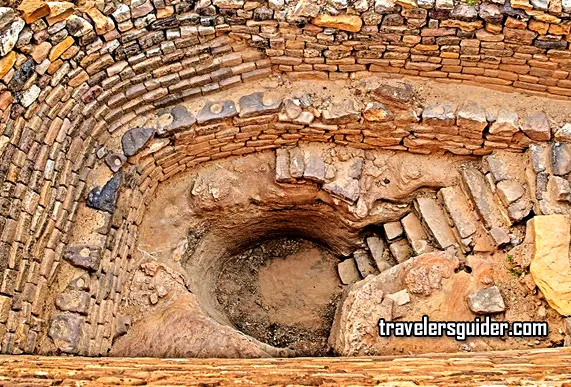
Dholavira, a Harappan City located in the Rann of Kachchh, Gujarat, India, is a UNESCO World Heritage Site that unveils the remnants of an ancient urban center dating back to the Indus Valley Civilization. Flourishing around 4500 years ago, Dholavira’s sophisticated urban planning and advanced water conservation systems stand as a testament to the ingenuity of its inhabitants. The meticulous layout of the city, with its impressive reservoirs and intricate architecture, offers insights into the economic, social, and technological advancements of the Harappan people. Recognized by UNESCO, Dholavira invites visitors to embark on a journey through time, unraveling the mysteries of this archaeological marvel on the fringes of the Kachchh desert.
40. Kakatiya Rudreshwara (Ramappa) Temple, Telangana
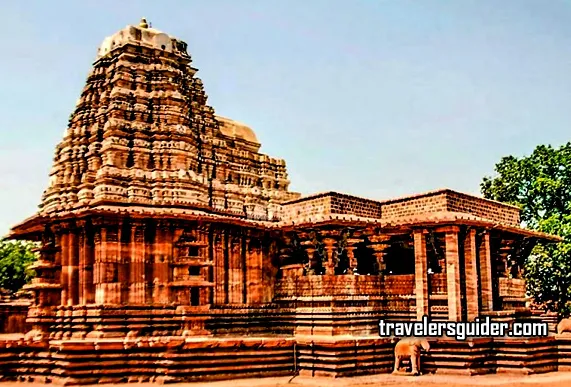
The Kakatiya Rudreshwara (Ramappa) Temple in Telangana, India, is a UNESCO World Heritage Site that stands as a testament to the architectural brilliance of the Kakatiya dynasty. Built in the 13th century, this temple is a remarkable fusion of Kakatiyan, Chalukyan, and Dravidian architectural styles. The intricate carvings, exquisite sculptures, and the floating brickwork technology used in its construction showcase the advanced craftsmanship of the time. Recognized by UNESCO, the Ramappa Temple is not just a religious site but a cultural marvel, inviting visitors to marvel at its unique architectural features and the enduring legacy of the Kakatiya dynasty in the heart of Telangana.
41. Sacred Ensembles of the Hoysalas
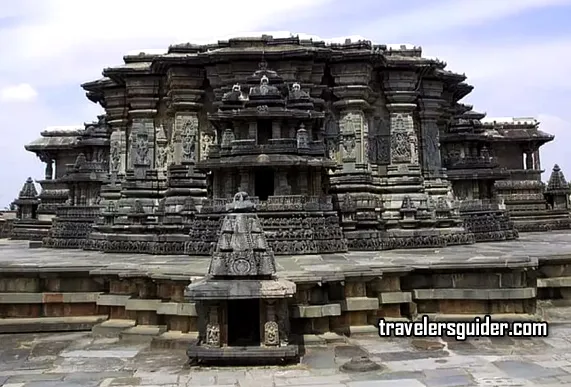
The Sacred Ensembles of the Hoysalas, a UNESCO World Heritage Site in Karnataka, India, encapsulate the artistic grandeur of the Hoysala dynasty during the 12th and 13th centuries. Comprising temples like the Chennakesava Temple at Belur, Hoysaleswara Temple at Halebidu, and the Kesava Temple at Somnathapura, these sites are exemplars of intricate Hoysala architecture. The temples are adorned with exquisitely detailed sculptures and friezes, showcasing a harmonious blend of Chalukyan, Dravidian, and Nagara architectural styles. Recognized by UNESCO, the Sacred Ensembles of the Hoysalas invite visitors to immerse themselves in the artistic opulence and religious significance of these medieval temples in Karnataka.
42. Santiniketan, West Bengal
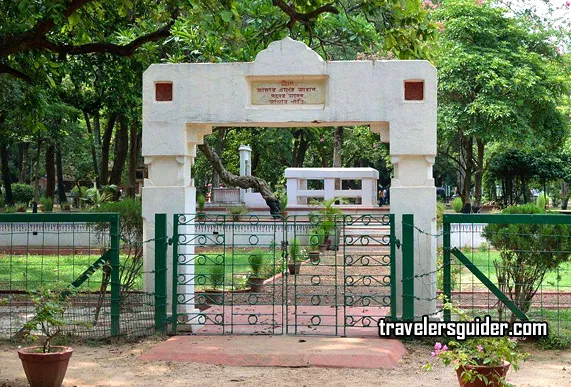
Santiniketan, a UNESCO World Heritage Site in West Bengal, India, is a cultural and educational oasis that emerged under the visionary guidance of Rabindranath Tagore. Established in 1863, Santiniketan translates to “Abode of Peace” and is the home of Visva Bharati University. The site includes Tagore’s residence, the Uttarayan Complex, the art gallery Kala Bhavan, and the iconic prayer hall, Chhatimtala. Recognized by UNESCO, Santiniketan is a kind of old Indian educational institution (like gurukul) with accommodation and based on the Tagore’s philosophy of holistic education, art, and cultural synthesis. The site invites visitors to experience the tranquil ambiance and the enduring legacy of Tagore’s vision in this unique educational and cultural hub.
Conclusion
We see the architectural genius, historical significance, and cultural diversity that characterize India as we travel across seven UNESCO World Heritage Sites. Every monument, from the famous Taj Mahal to the historic caves of Ajanta and Ellora, invites tourists to explore the rich fabric of India’s past by telling a tale that endures beyond time. These locations are a tribute to the continuing legacy of human civilization and serve as a link between the past and present, belonging to both India and the rest of the world.
FAQ
How many UNESCO World Heritage Sites are there in India?
India is home to forty-two (42) UNESCO World Heritage Sites. In September 2023, Santiniketan, founded by Nobel laureate Rabindranath Tagore, is designated as India’s forty-first world historic site. In September 2023, the Sacred Ensembles of the Hoysalas in Karnataka were added to the list by UNESCO.
Which Indian site was the inaugural UNESCO World Heritage Site?
The Taj Mahal, Agra Fort, Ellora Caves, and Ajanta Caves were the first places to be inscribed; they were all included in the 1983 World Heritage Committee session. Santiniketan and the Sacred Ensembles of the Hoysalas were the most recent locations to be included in 2023.
What temple has been designated as a World Heritage Site by UNESCO?
UNESCO has inscribed the Karnataka Hoysala Temples of Belur, Halebid, and Somnathapura on its World Heritage list.
For what town has the designation of World Heritage Site?
Karnataka – Hampi Monument Group (1986)
Madhya Pradesh – Khajuraho, Group of Temples (1986)
Tamil Nadu – Great Living Chola Temples at Thanjavur, Gangaikondacholapuram, and Darasuram (1987 & 2004)
Maharashtra – Elephanta Caves (1987)
What is the full form of UNESCO ?
UNESCO stands for the United Nations Educational, Scientific and Cultural Organization.
Related Articles, You May Like

